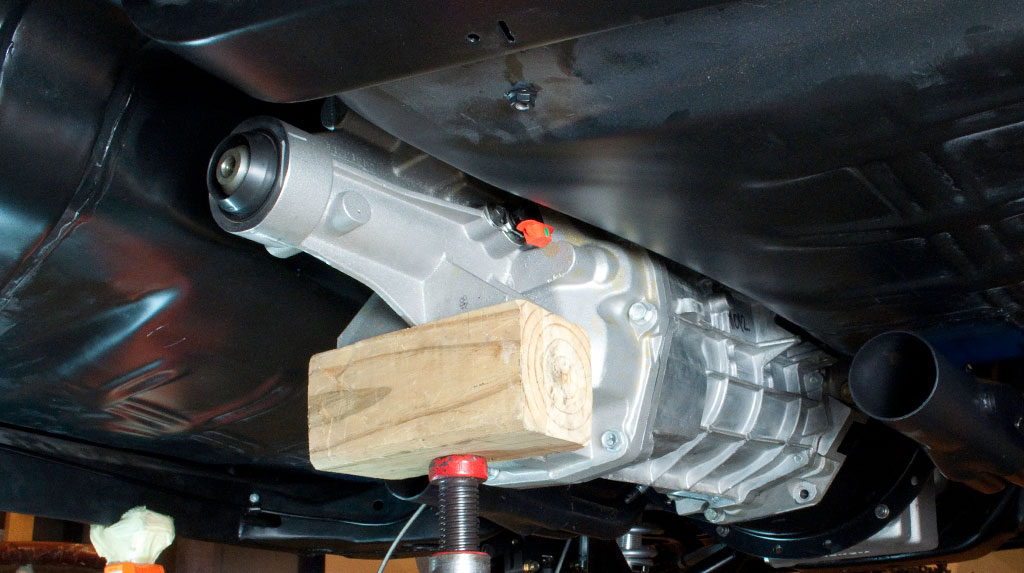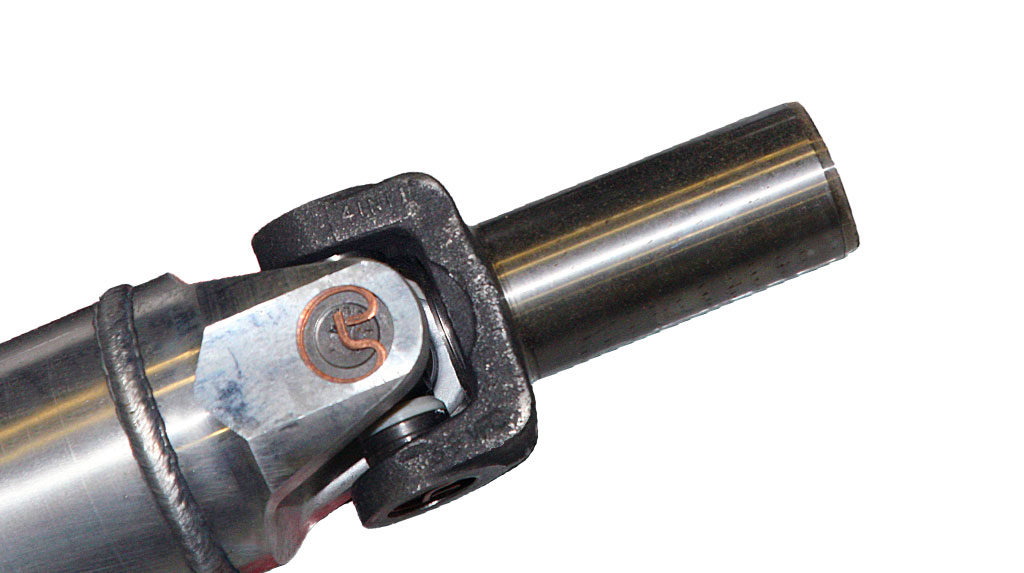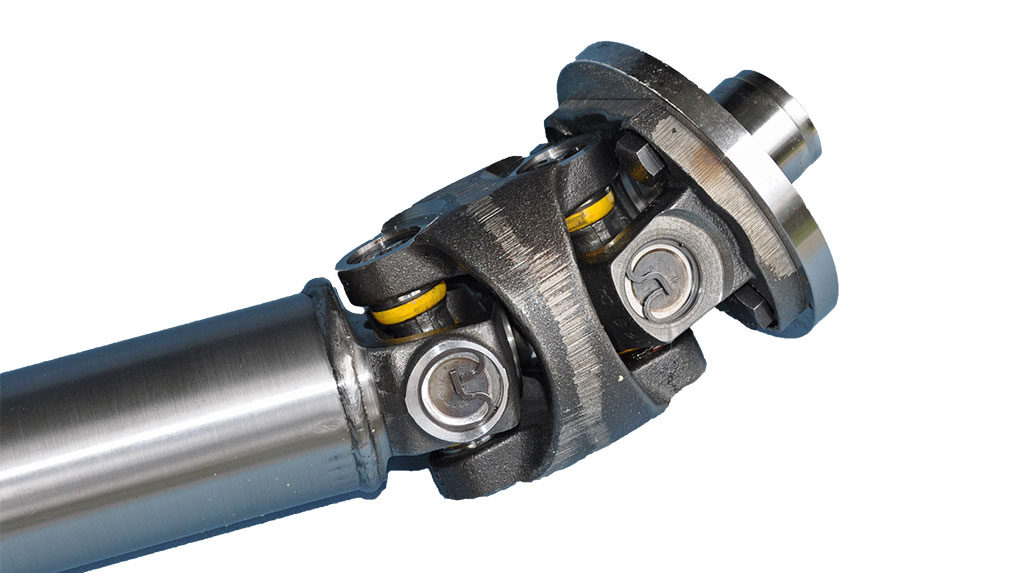There are many components that will need consideration when installing a TREMEC Magnum or TREMEC TKO transmission in car that didn’t come with one from the factory.
This is our first in a series to bring you information to help you understand how these components work together. With this information, you can avoid unwanted vibrations, get the best performance from your new TREMEC transmission and enjoy driving your hot rod or muscle car!
While we are experts in the design and manufacturing of world-class transmissions, we wanted to make sure we brought you the best information possible about driveshaft vibration. To do so, we worked with Bruce Schafer, Technical Services Manager, at Raven Engineering. Raven specializes in balance solutions providing expertise, machinery and gauging tools to auto makers, military vehicle specialists, aeronautics and even race teams.
In basic terms, the purpose of the driveshaft – also called a propeller shaft or prop shaft – is to transfer torque and rotation from the transmission to the axle. There are choices for materials, diameters and couplings that match up to specific installation and operational requirements.
Your driveshaft purchase should be made with consideration of:
- How much power the engine makes
- What peak rpm the engine will turn
- What the driveshaft rpm will be
- How heavy the vehicle is
- How long the shaft needs to be

Potential Sources of Vibration
There are multiple possible sources of driveshaft vibration. These vibrations often become compounded when switching from an old 3-speed or 4-speed transmission with a 1:1 final gear ratio to a TREMEC overdrive transmission which can have a final gear ratio as low as 0.5:1.
The overdrive gear lowers the engine rpm but customers often change to a numerically higher axle gear ratio to drive at modern highway speeds. The result of these changes can increase the rpm of the driveshaft significantly – sometimes even doubling the rotational speed of the driveshaft.
The most basic causes of vibration in a driveshaft come from the shaft being bent or out of balance. While you can inspect the driveshaft for signs of damage, only a qualified driveshaft shop can check for true straightness and balance.
The next most common source of vibration is improper powertrain angle, driveshaft angle and axle pinion angle. Using traditional u-joints (more info on types of joints is below), the transmission output shaft and the axle pinion should be parallel to each other. The angle finder in the TREMEC Toolbox App is an easy way to determine if these angles and the driveshaft angle are correct.
Another type of vibration is caused by approaching or reaching the critical speed (see below for more information) of the driveshaft. This normally only happens at very high speed, but with overdrive transmissions and the popularity of road racing, it is something to consider.
Materials: Steel, Aluminum, Carbon Fiber
Due to its strength and low cost, steel is the most common driveshaft material. Two types of steel tubing are used to make driveshafts. One is Drawn Over Mandrel (D.O.M) mild steel and the other is seamless 4130 chromoly. A properly constructed mild steel driveshaft is capable of supporting more than 1,000 horsepower. Chromoly is even stronger and lighter.
Light-weight aluminum driveshafts are made from 6061 or 7075 aluminum tube with aluminum yokes that are either welded or bonded to the tube. Aluminum is desirable because it weighs considerably less than steel. The downsides of aluminum are lower ultimate strength and fatigue life compared to steel. Because of this it is recommended that aluminum shafts in demanding applications are inspected periodically to ensure they are straight and free of cracks or other flaws.
Carbon fiber driveshafts are the lightest available and consist of carbon fiber tube that is bonded to aluminum end yokes. Carbon fiber has a very high strength-to-weight ratio, but it is also very sensitive to surface damages like scratches or nicks. Either of these are likely to result in failure.
One of the most important considerations in choosing a driveshaft is what the critical speed of the shaft will be. This is the speed where rotation frequency matches the natural frequency of the shaft. Vibrations are multiplied when natural and operating frequencies are matched, and this can cause the shaft to fail.
Critical Speed
Critical speed can be raised by making the shaft lighter, stiffer or shorter, or by increasing diameter without increasing weight. This is where materials like aluminum and carbon fiber should be considered.. Aluminum is not as strong as steel but it may actually perform better if the shaft requires a higher critical shaft speed than steel can provide. Carbon fiber tubing is inherently stiff and it can be made to a variety of thicknesses and diameters, making it a good material for high-speed driveshafts.
Types: single vs multi-piece
Multi-piece driveshafts serve a variety of applications where a 1-piece shaft is not feasible. Examples include long wheelbase vehicles like trucks and vans, short wheelbase vehicles with tall lift kits like Jeeps, Broncos, etc., or vehicles like the newer GTO or Mustang where packaging space does not allow for a large enough shaft diameter to satisfy critical speed and noise, vibration, harshness (NVH) requirements. Most TREMEC Magnum and TKO installations into muscle cars and hot rods will use a single-piece driveshaft.
Flange Types: Fixed Flange vs Slip Yoke
Slip yokes are common where 1-piece driveshafts are installed in vehicles that have a sprung rear axle (as opposed to a fixed location IRS). The tube of the yoke is splined on the inside and it engages splines on the transmission output shaft. As the rear suspension moves up and down, the driveshaft will plunge towards and away from the transmission. The slip yoke literally slips in and out of the transmission during the driveshaft’s plunging motions.

Fixed flanges or fixed yokes are normal in systems that have fixed differential mounting and independent rear suspensions. This includes the Gen 5 and Gen 6 Camaro and the 2008 and newer Dodge Challenger. There is no movement in the rear axle, so the driveshaft doesn’t need to move up or down, and the distance between the output flange on the transmission and input flange on the rear axle remains constant.
Instead of a slip yoke, a fixed flange or yoke is bolted to the output shaft of the transmission and the driveshaft is coupled to the flange through universal or constant velocity joints.
Joints: Single/Double Cardan, Variable vs Constant Velocity
Several options exist to satisfy various coupling requirements. Cardan, or universal joints, are the most common and widely used in single- and multi-piece driveshafts with operating angles lower than about 15 degrees.

Double Cardan Joints (DCJs) have two universal joints mounted in a phased position in a center yoke. DCJs are useful in applications with long suspension travel like off-road vehicles, but they can cause vibrations in high-speed applications. The maximum cardan angle should be three degrees or less.
Constant Velocity joints (CV joints) transfer torque through a series of steel balls that are placed in longitudinal grooves of spherical inner and outer shells. This configuration allows torque transfer to occur at constant rotational speeds with high articulation angles. Outer CV joints allow articulations up to about 45-50 degrees. Inner CV joints allow less articulation than outer joints, but they are made to accept plunge movement so the shaft can move inward and outward as the suspension moves up and down.
Tripod joints have a 3-legs spaced 120 degrees apart on a center yoke and spherical caged needle bearings on each leg. The bearings ride inside of a cupped housing with three grooves that accept the yoke and bearings. Tripod joints have similar articulation to an inner CV joint but greater plunge travel. Tripod joints are normally used on inboard locations independent rear suspensions or front wheel drive applications.
Conclusion
The switch from old transmission technology with final drive ratios of 1:1 to a TREMEC overdrive transmission can significantly increase driveshaft speed. I Installing a TREMEC Magnum or TREMEC TKO transmission in a hot rod or muscle car will almost always require a new driveshaft. By understanding the various options for driveshafts and where the potential sources of vibration exist, you can choose the best option for your vehicle. This will help the driveshaft operate as smoothly as your new TREMEC transmission and give you the best driving experience possible.

